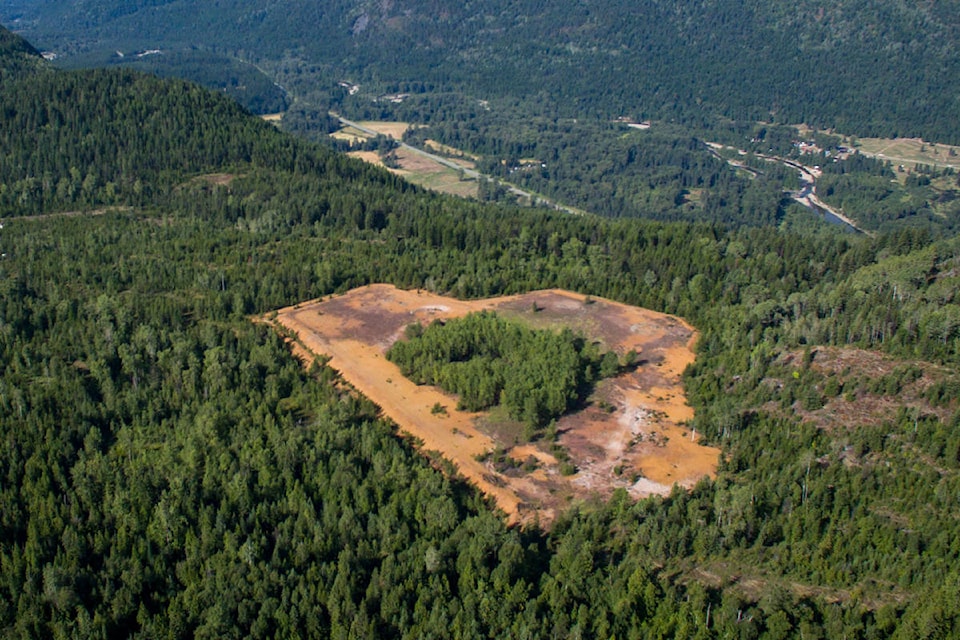A partnership between a mining company and a Salmo environmental organization could result in the cleanup and even extraction of new minerals from a decades-old tailings site.
Margaux Resources is exploring the nearby tailings that served the Jersey-Emerald mines when they were previously active from 1906 to 1974.
Margaux president Tyler Rice said an application to test a bulk sample of the tailings has already been submitted to both the Ministry of Energy, Mines and Petroleum Resources, as well as the Ministry of Environment and Climate Change Strategy.
“We’re very excited about the opportunity to potentially economically recover this tail pile,” said Rice. “I feel like if we can demonstrate success here with the over 44 tailing ponds in this area, there’s a great business opportunity and partnership with our environmental group.”
The company signed a lease-to-own agreement in 2014 for the mines southeast of Salmo, and announced two years ago it had discovered high-grade lead-zinc and silver on the property.
Rice said an initial sample of the 1.4 million tonne tailings deposit has already been analyzed, and another is on its way to South Africa for testing at a tungsten smelter. If it’s feasible to recover enough minerals and metals from the tailings, the company will apply to proceed.
Rice added it will be a few months before the sample results are known.
“We have very good indications that we’re going to have success with what we’re doing,” said Rice.
Margaux doesn’t own the land the tailings site is on, but Rice said the company has an access agreement with the current land owners.
The plan is welcome news for the Salmo Watershed Streamkeepers Society, who started working with Margaux last year to find economic solutions for local tailings.
“This is a partnership built in heaven,” said society co-ordinator Gerry Nellestijn. “We have someone here who is in industry but says, ‘We’re not sloughing off this responsibility. This is an opportunity and let’s see what we can do with it. We’ll follow and explore new environmental approaches to deal with these sites.’”
The society has plenty of experience with tailing remediation.
For eight years, Nellestijn’s group lobbied the provincial government to clean up the Yankee Girl Mine tailings site, which was contaminating water in Ymir.
“What typically has happened historically is abandonment of those tailings,” said Nellestijn. “Now we’re moving away from that sort of thing, but we have no shortage of examples of recent tailings that have been abandoned or failed be properly managed. It’s scary stuff.”
The Yankee Girl tailings were eventually remediated in 2008 and 2009 at a cost of $6.5 million.
Although he’s happy with the final product, Nellestijn thought the path to remediation could be improved. So the society began reaching out to companies that might see the economic benefits of removing pollutants left over by mines, which in turn led to the partnership with Margaux.
Nellestijn said remediation is also far more practical now than it previously was. Technology able to identify materials in the tailings is more accessible, and separation techniques are more refined.
“The thinking around remediation has progressed,” he said. “I sense it’s less fearful and more known. We know more about what to do and we’re not as scared of it.”
tyler.harper@nelsonstar.com
Like us on Facebook and follow us on Twitter
